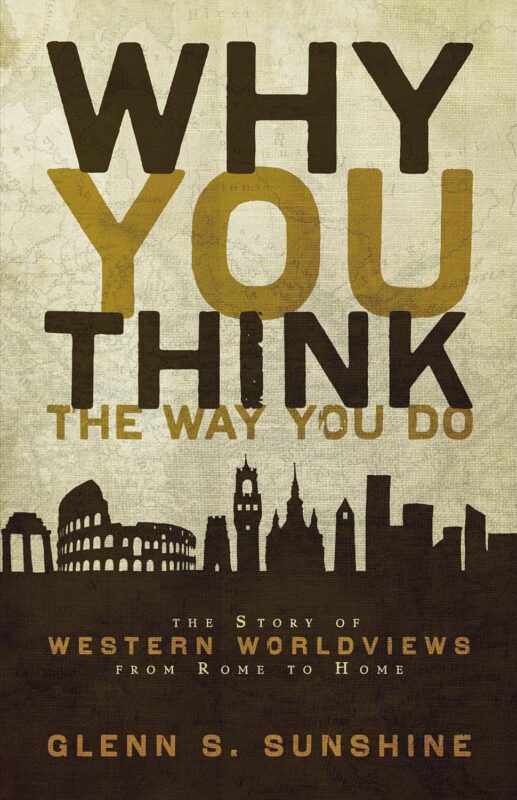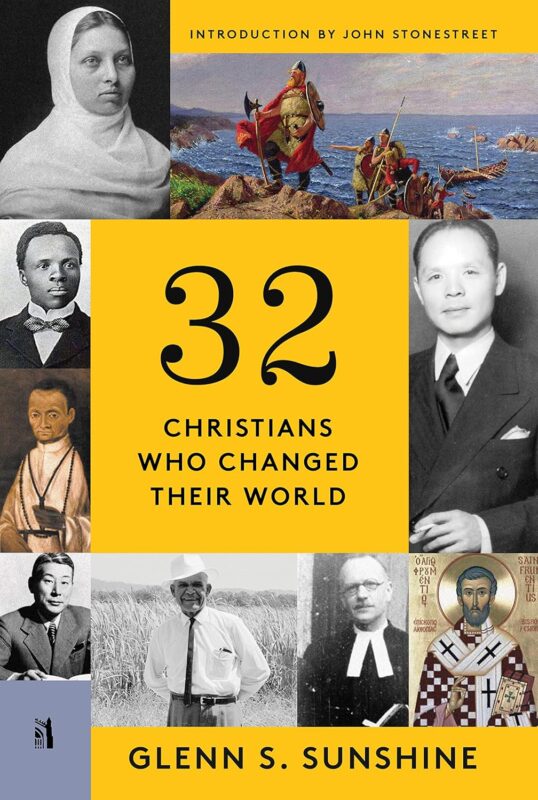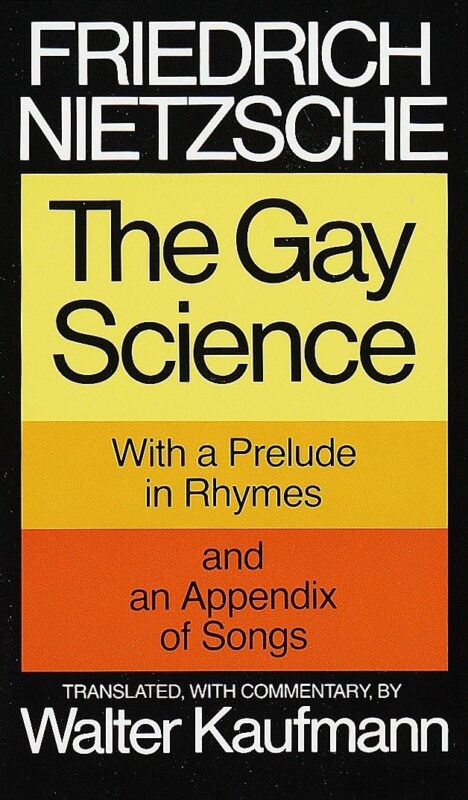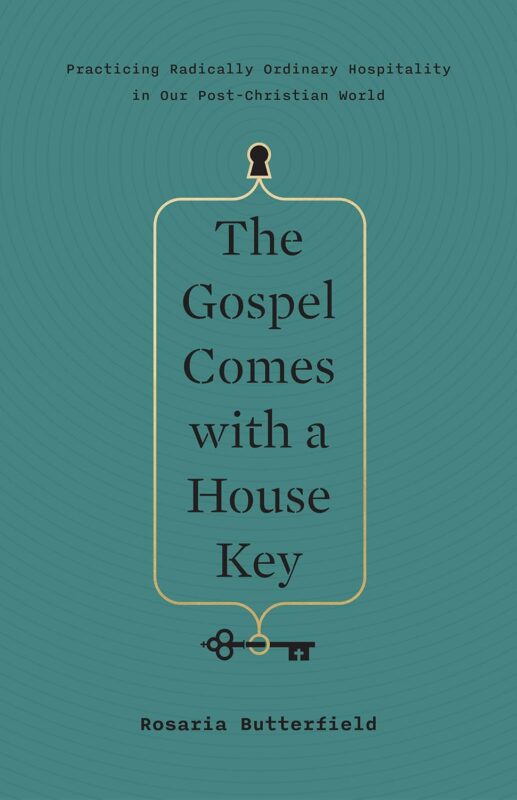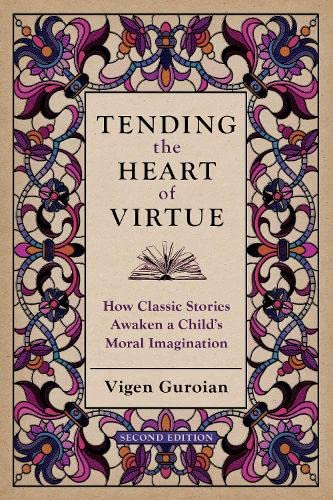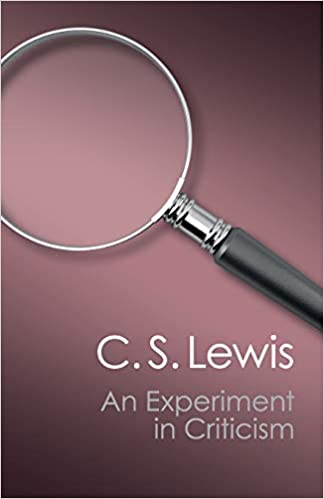Why You Think the Way You Do: The Story of Western Worldviews from Rome to Home
How do we come by our worldviews and philosophies? What impact did Christianity have on the worldviews that are common to Western civilization?
Why You Think the Way You Do traces the development of the worldviews that underpin the Western world. Professor and historian Glenn S. Sunshine demonstrates the decisive impact that the growth of Christianity had in transforming the outlook of pagan Roman culture into one that—based on biblical concepts of humanity and its relationship with God—established virtually all the positive aspects of Western civilization.
The two-pronged assault in our time on the biblically based worldview by postmodern philosophy and the writings of neo-atheists has made it even more crucial that we acknowledge and defend its historical roots.
This authoritative, accessible survey discusses Western worldviews as a continuous narrative rather than as simply a catalogue of ideas. Why You Think the Way You Do:
- Traces the effects that changes in worldview had on society.
- Helps you understand your own worldview and those of other people.
- Helps you recognize the ways that your worldview, philosophies, beliefs, and presuppositions affect the way you think about everything.
32 Christians Who Changed Their World
The Christian faith is a call to adventure. Be inspired by these thirty-two saints and give thanks for their faithful stories. Now go and do likewise where God has put you.
For two thousand years, average Christians have been transforming culture, and this collection of stories by Dr. Glenn Sunshine tells some of those stories. Men like Robert Grosseteste and Roger Bacon laid the foundations for science. Political figures like Abba Enbaqom and Sorghaghtani Beki (daughter-in-law of Genghis Khan) promoted Christianity in societies hostile to it. Christians like Roque González and Solomon Plaatje opposed racial oppression, and heroes like Andre Trocme and Ho Fengshan helped Jews escape the Holocaust.
These men and women all have stories that show how broad and transformative the Christian faith really has been on the world. Learn these stories and be like them.
“[These Christians] worked across various cultural spheres as if Christian truth mattered as much there as in any church. They sought to educate because they believed God is truth. They sought to liberate, because they knew every person bears God’s image and that truth sets us free. They sought to create, because in creating we worship the Creator. They sought to alleviate suffering, because God had, originally, created the world good. They fought injustice because God is just and wants justice in His world. They lived as if Christ is King, because they knew He is.” ~from John Stonestreet's preface
More info →The Gay Science: With a Prelude in Rhymes and an Appendix of Songs
The book Nietzsche called "the most personal of all my books." It was here that he first proclaimed the death of God—to which a large part of the book is devoted—and his doctrine of the eternal recurrence.
Walter Kaufmann's commentary, with its many quotations from previously untranslated letters, brings to life Nietzsche as a human being and illuminates his philosophy. The book contains some of Nietzsche's most sustained discussions of art and morality, knowledge and truth, the intellectual conscience and the origin of logic.
Most of the book was written just before Thus Spoke Zarathustra, the last part five years later, after Beyond Good and Evil. We encounter Zarathustra in these pages as well as many of Nietzsche's most interesting philosophical ideas and the largest collection of his own poetry that he himself ever published.
Walter Kaufmann's English versions of Nietzsche represent one of the major translation enterprises of our time. He is the first philosopher to have translated Nietzsche's major works, and never before has a single translator given us so much of Nietzsche.
More info →The Gospel Comes with a House Key: Practicing Radically Ordinary Hospitality in Our Post-Christian World
"This book is going to shake us all up in the most wonderfully destabilizing way.” ―Ray Ortlund, Lead Pastor, Immanuel Church, Nashville, Tennessee
What did God use to draw a radical, committed unbeliever to himself? Did God take her to an evangelistic rally? Or, since she had her doctorate in literature, did he use something in print? No, God used an invitation to dinner in a modest home, from a humble couple who lived out the gospel daily, simply, and authentically.
With this story of her conversion as a backdrop, Rosaria Butterfield invites us into her home to show us how God can use this same “radical, ordinary hospitality” to bring the gospel to our lost friends and neighbors. Such hospitality sees our homes as not our own, but as God’s tools for the furtherance of his kingdom as we welcome those who look, think, believe, and act differently from us into our everyday, sometimes messy lives―helping them see what true Christian faith really looks like.
More info →Tending the Heart of Virtue: How Classic Stories Awaken a Child’s Moral Imagination
From Pinocchio to The Chronicles of Narnia to Charlotte's Web, classic children's tales have shaped generations of young people. In recent years, homeschoolers and new classical schools have put these masterpieces of children's literature at the center of their curricula. And these stories continue to be embraced by parents, students, and educators alike.
In Tending the Heart of Virtue, Vigen Guroian illuminates the power of classic tales and their impact on the moral imagination. He demonstrates how these stories teach the virtues through vivid depictions of the struggle between good and evil, while he also unveils components of the good, the true, and the beautiful in plot and character. With clarity and elegance, Guroian reads deeply into the classic stories. He demonstrates how these stories challenge and enliven the moral imaginations of children. And he shows the reader how to get "inside" of classic stories and communicate their lessons to the child.
More info →The Discarded Image: An Introduction to Medieval and Renaissance Literature
In The Discarded Image, C.S. Lewis paints a lucid picture of the medieval world view, providing the historical and cultural background to the literature of the Middle Ages and Renaissance. It describes the "image" discarded by later years as "the medieval synthesis itself, the whole organization of their theology, science and history into a single, complex, harmonious mental model of the universe." This, Lewis’s last book, has been hailed as "the final memorial to the work of a great scholar and teacher and a wise and noble mind."
More info →An Experiment in Criticism
Why do we read literature and how do we judge it? C. S. Lewis's classic An Experiment in Criticism springs from the conviction that literature exists for the joy of the reader and that books should be judged by the kind of reading they invite. He argues that "good reading," like moral action or religious experience, involves surrender to the work in hand and a process of entering fully into the opinions of others: "in reading great literature I become a thousand men and yet remain myself." Crucial to his notion of judging literature is a commitment to laying aside expectations and values extraneous to the work, in order to approach it with an open mind. Amid the complex welter of current critical theories, C. S. Lewis's wisdom is valuably down-to-earth, refreshing and stimulating in the questions it raises about the experience of reading.
More info →
